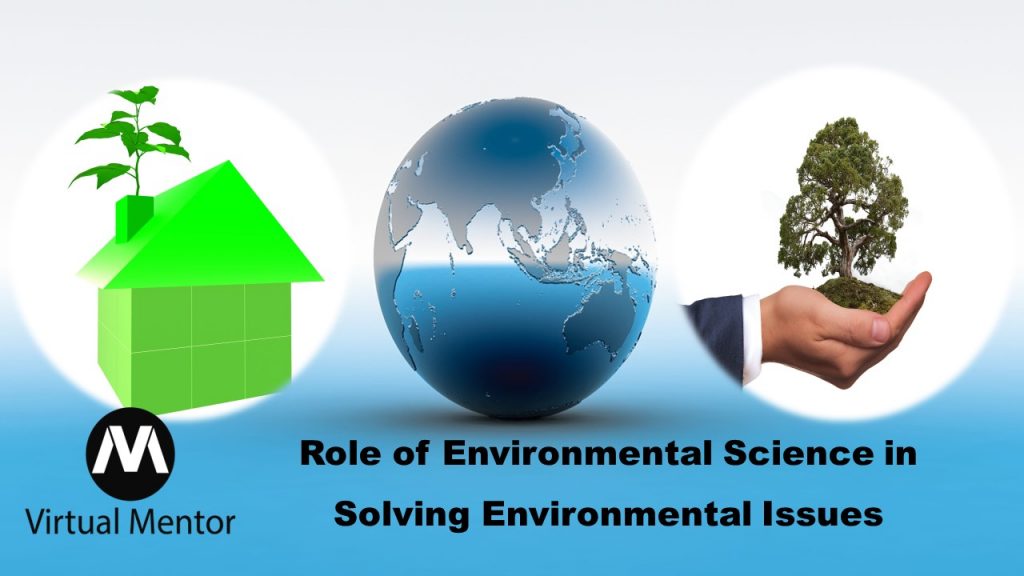What is an environment?
An environment is our surroundings on the planet earth, where we are living. It is a natural and geographical place where a person, animal, plant or any other living organism exists and performs its roles accordingly to its niches.
Environmental Science:
Environmental science is a science that deals with environmental issues, such as the physical, biochemical, socio-political, economic and cultural aspects of the environment. Environmental science has a great role to attract the attention of the world to environmental issues.
A balanced system:
An environment is actually a very balanced system of our biological habitat having various organic & inorganic, biotic as well as abiotic components in which we are living as well as performing roles. A human has plains, mountains, rivers, oceans, atmosphere, and gardens full of living organisms in its surrounding. All these are constantly in balance with one another. This balance is maintained by a number of biogeochemical cycles, i.e., hydrological cycle, carbon cycle, nitrogen cycle, and plenty of other mineral cycles. This balance is maintained for centuries because of planet and universe is a self-sustained systems.
Disturbances in natural balance:
The materialistic human race disturbed the ecological balance of our planet leading to the upsetting self-sustained system of our environment. The facilities to raise the standard of life are good but to exploit unwise environmental resources for the materialistic race, to grab money, and competition is not good for our beautiful blue planet. If a human wants facilities, it is good but at the cost of environmental degradation, these facilities have no means. The role of environmental science is to solve these environmental issues and maintain environmental balance.
What causes disturbance in Environmental Balance?
Environmental scientists informed the world about the following major environmental issues.
- Industrialization: The establishment, development, and advancement of industries have assisted humanity by increasing the standard of its living. Industrialization also has simultaneously crushed our current balanced environment. Wastes Produced by industries: Air Pollutants (oxides of sulphur, oxides of nitrogen, Carbon monoxide, suspended matters etc), water pollutants (infectious agents like viruses, bacteria, parasites, pesticides, chemicals like nitrates, phosphates, carcinogens, faecal matter, radioactive substances, heavy metals like chromium, arsenic, mercury etc.).
- Automobile exhausts: Automobiles on the one hand provided us with fast transportation, while on the other hand a large source of air pollutants like oxides of sulphur, oxides of nitrogen, Carbon monoxide, volatile organic compounds, etc.
- Sewerage wastes: Household sewerage also contains a large number of toxic substances like soaps, detergents, pesticides, infectious agents, drugs etc.
- Unwise use of resources: Unwise use of non-renewable resources leads to rapid consumption and depletion of these valuable resources. This upsets the natural ecological balance.
Consequences of Disturbance in Environmental Balance:
The above-mentioned environmental issues result in the following serious consequences.
- Degradation of Environment: The addition of lots of waste pollutants, and effluents rich in toxic substances are being continuously infused into the climate by the industries, household sewerage and automobile. These wastes destroy the climate, water bodies, and soil fertility.
- Toxic to Human health: These eluents often contain a sizeable measure of specific extremely poisonous even cancer-causing materials. Heavy metals like lead from vehicles, and chromium from tanneries, are playing devastation to human health. Natural contamination has reached a disturbing level in certain Countries. This results in filling hospitals due to environmental toxicity.
- Loss of species: This issue also results in the loss of very important species of living organisms, which have a strong positive and beneficial role in the maintenance of ecological balance.
- Depletion of resources: The unwise use of resources results in the depletion of resources; hence, the components of the world’s biological system would suffer irreparable loss. This is very unfortunate because this upsets the climate and would never again uphold life on this planet.
- Global Warming: Air pollution also results in the global temperature rise. This will upset the hydrological cycle and results in excessive rains, uneven drought, melting of glaciers, and flooding on coastlines
- Ozone Depletion: Some air pollutants such as Chlorofluorocarbons damage the stratospheric ozone layer. This ozone is a shield that protects life on the planet from harmful rays. When the ozone layer is damaged, the harmful rays fall on the life on the planet. These harmful rays result in severe illnesses such as cataracts and even skin cancers.
- Acid Rains: The oxides of nitrogen and sulphur mixed with rain water turn into acid rains. The acid rain is very devastating for life as well as non-living material such as stone buildings and monuments.
Treatment of these Problems:
Environmental science has helped humankind in understanding these serious environmental issues and researchers are continuously endeavouring to find the best solution that put this climate right place from this deterioration. The environmental scientists did a lot of scientific steps to treat these environmental problems, we are discussing some important ways below.
- Afforestation:
Afforestation is the planation of new forests. As forests are the environmental buffer, so they have a potential role in the maintenance of climate. Forests are the best solution for a number of environmental issues, such as treatment of air pollution, and absorption of greenhouse gases. So that there is a need of the hour to afforestation on large scale.
- Location of Industrial Units:
The industries will be placed away from the housing societies. There will be a concept of industrial cities, containing major industrial units far away from human residences.
- Lessens the use of fossil fuel:
There must be a reduction in the burning of fossil fuels such as coal, oil and gas. We should rely on the energy obtained from electricity as well as solar energy. This will sufficiently reduce environmental pollution.
- Treatment of industrial wastes:
Environmental scientists have currently requested the industrialist for the treatment of industrial effluents and other wastes before these are going to be dumped into the environment. The suggestion they made for the treatment of waste must be compulsory and protected by law.
- Bioremediation:
It is a treatment method for wastes and toxins by using some living organisms. Multiple methods of bioremediation are being used these days.
For example, algae have been found to diminish contamination of heavy metals by bio-absorption. The bioremediation protocols are of two types:
- Bio-absorption: The removal of toxic substances from the environment by the absorption of some living organisms such as Algae.
- Bio-degradation: The destruction of toxic substances in the environment by living organisms such as fungi (yeasts).
- Endangered species: The species which are threatened to become extinct in near future are called endangered species. For Example, pandas, Green turtles, snow leopards, snow bears, and a variety of deer.
Biologists proposed some recommendations for the protection of a variety of plants and animals to protect them from extinction. They have focused on the requirements for their protection and made workable plans to protect them from their extinction.
Pakistan and Pollution:
The environmental issue of ecological contamination is a public issue in Pakistan. Our water bodies such as oceans, seas, rivers, ponds, and even canals are remarkably contaminated with the addition of city sewage and current wastes. Life in the water bodies of Pakistan is in decline. The fish population have been most unfavourably affected. We should take some serious steps to protect these beautiful and priceless natural resources.
In urban communities, especially the smoke of automobiles immensely adds lead (Pb) to the environment. There is then a requirement for the use of lead-free petroleum to decrease lead contamination.
The contaminated air released from the industries adds oxides of sulphur and nitrogen into the atmosphere making air unfit for consumption. We want to go to defensive lengths as soon as could really be expected. Otherwise, human health will be effected to such an extent there would never be a comeback.
The environmental protection department of Pakistan continuously working its best to treat these environmental issues by making legislation, protecting these laws, and making new strategies and advancements.


Excellent article. I certainly love this website. Keep writing!